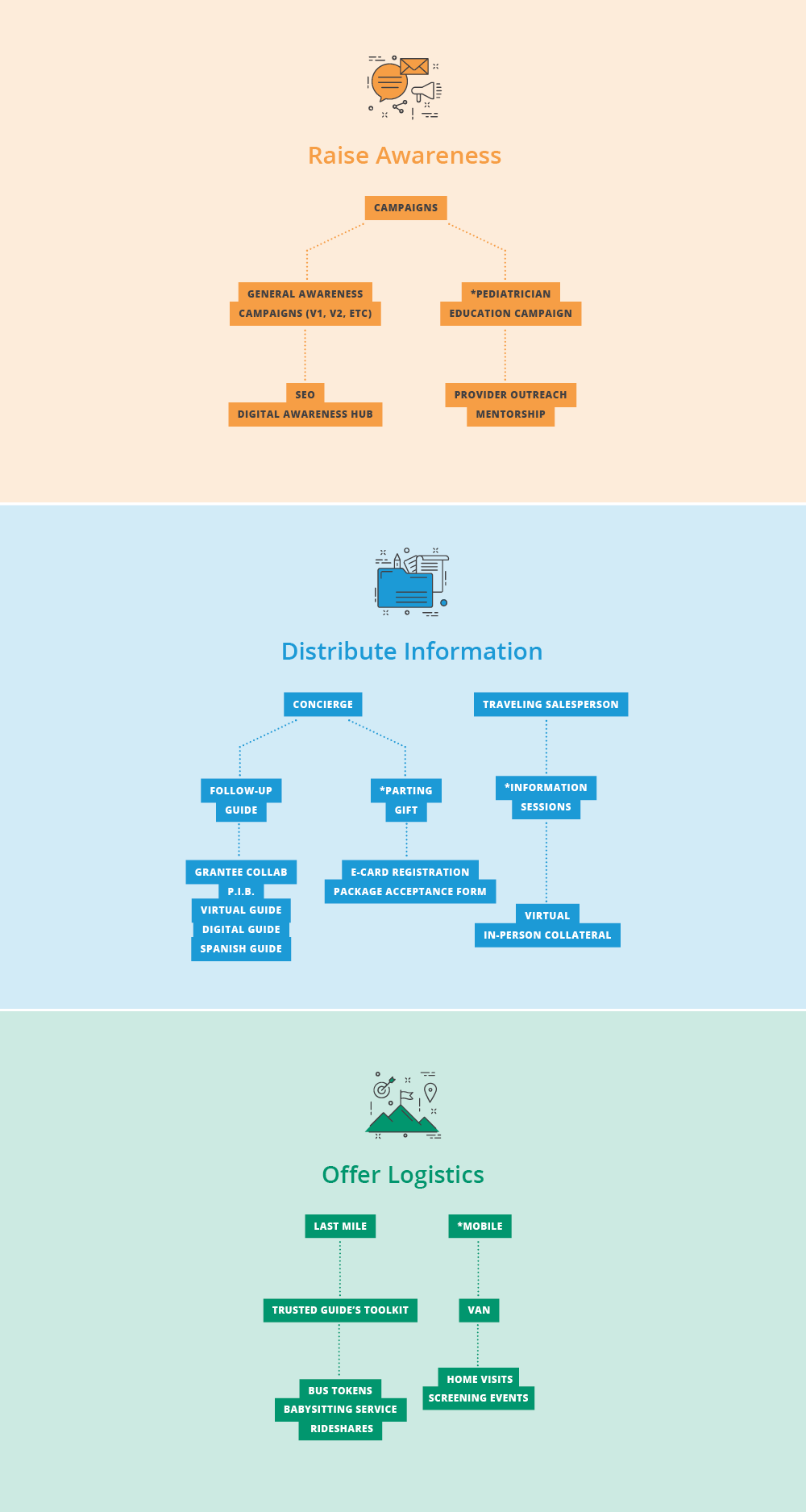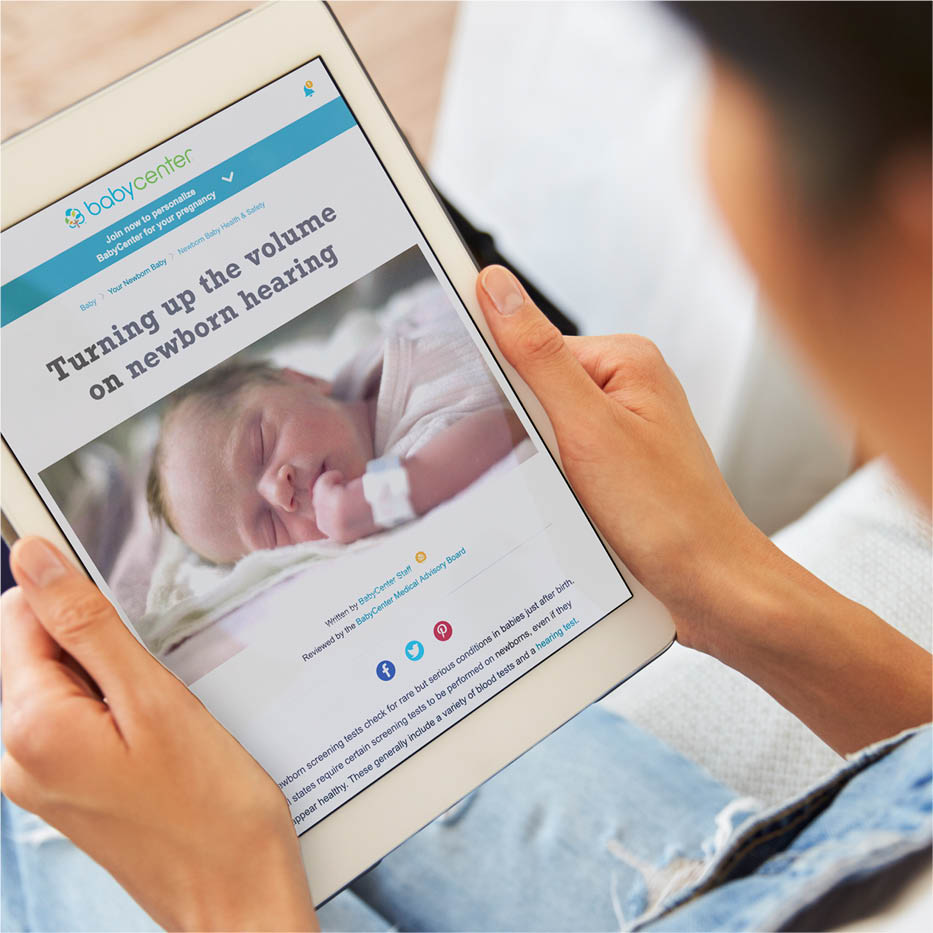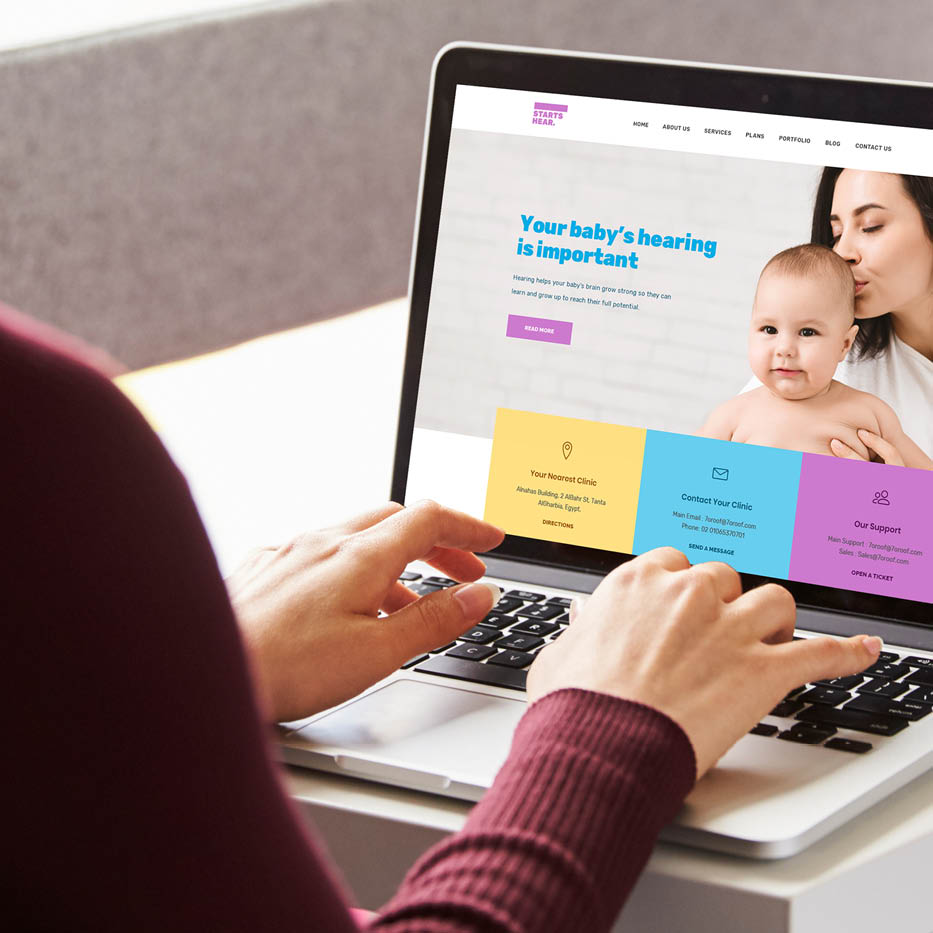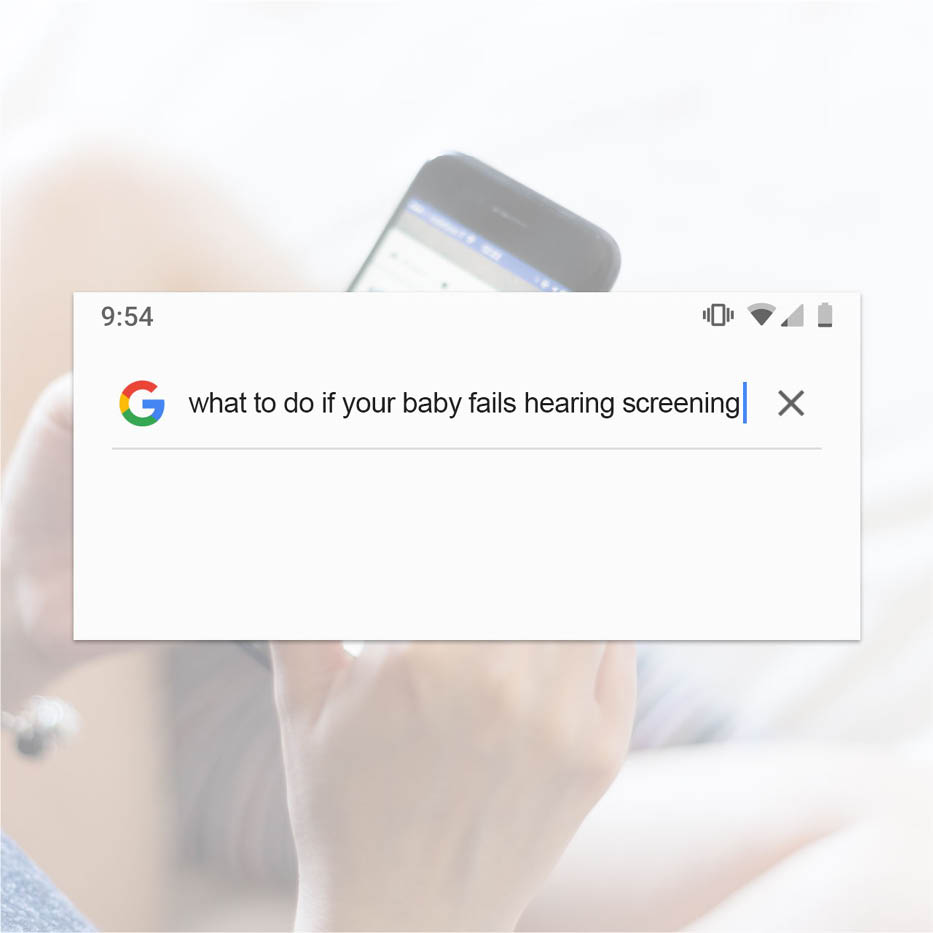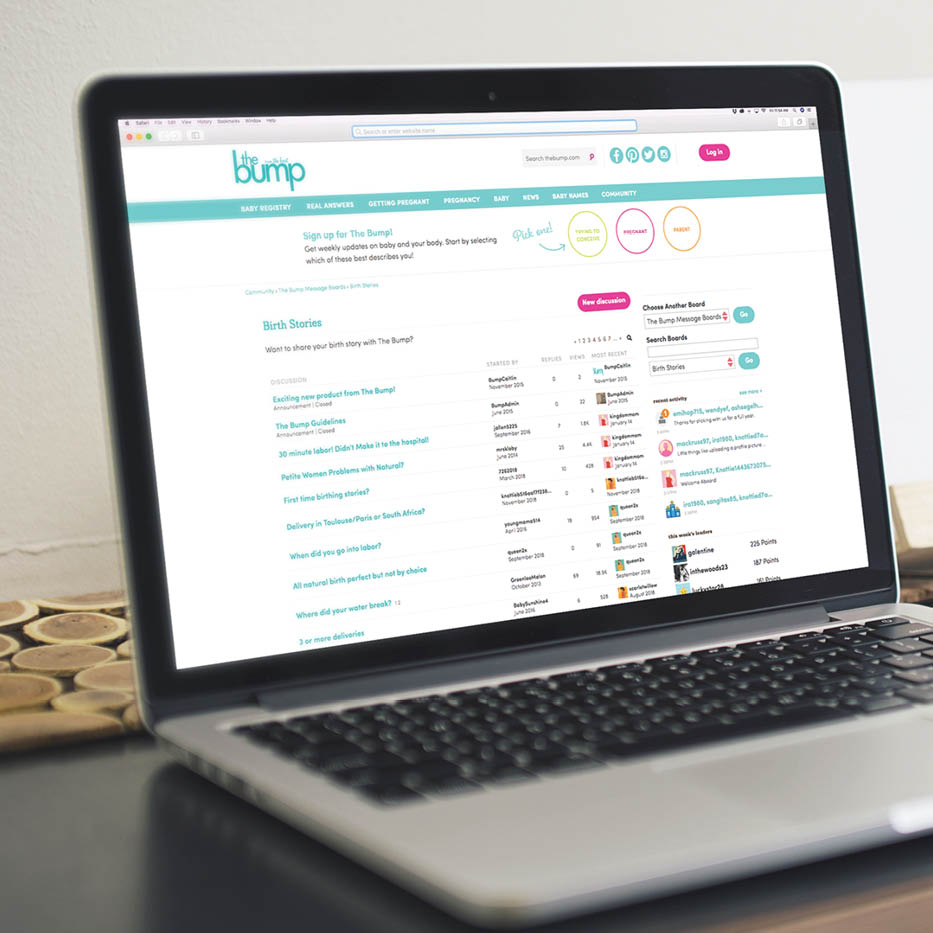Guiding families through a broken healthcare system

Services
- Audience Discovery
- Journey Mapping
- Segmentation and Personas
- Qualitative, Quantitative, and Secondary Research
- Design Principles
- Ideation/Co-creation
- Linear Awareness Tracker
Hearing loss is the most common newborn developmental emergency. Despite the importance and the urgency of newborn hearing, almost 40% of babies who failed newborn hearing screenings don't get the critical help they need. Oberkotter Foundation and FiveStone partnered together to understand the challenges and create a solution that supports babies who are born DHH (deaf or hard of hearing).
An integrated, phased approach
Our solution was driven by human-centered design and included a coordinated ecosystem of tactics to address each of the significant barriers families encounter. These tactics guide families through awareness, information, and logistical challenges for a timely and efficient journey to hearing.
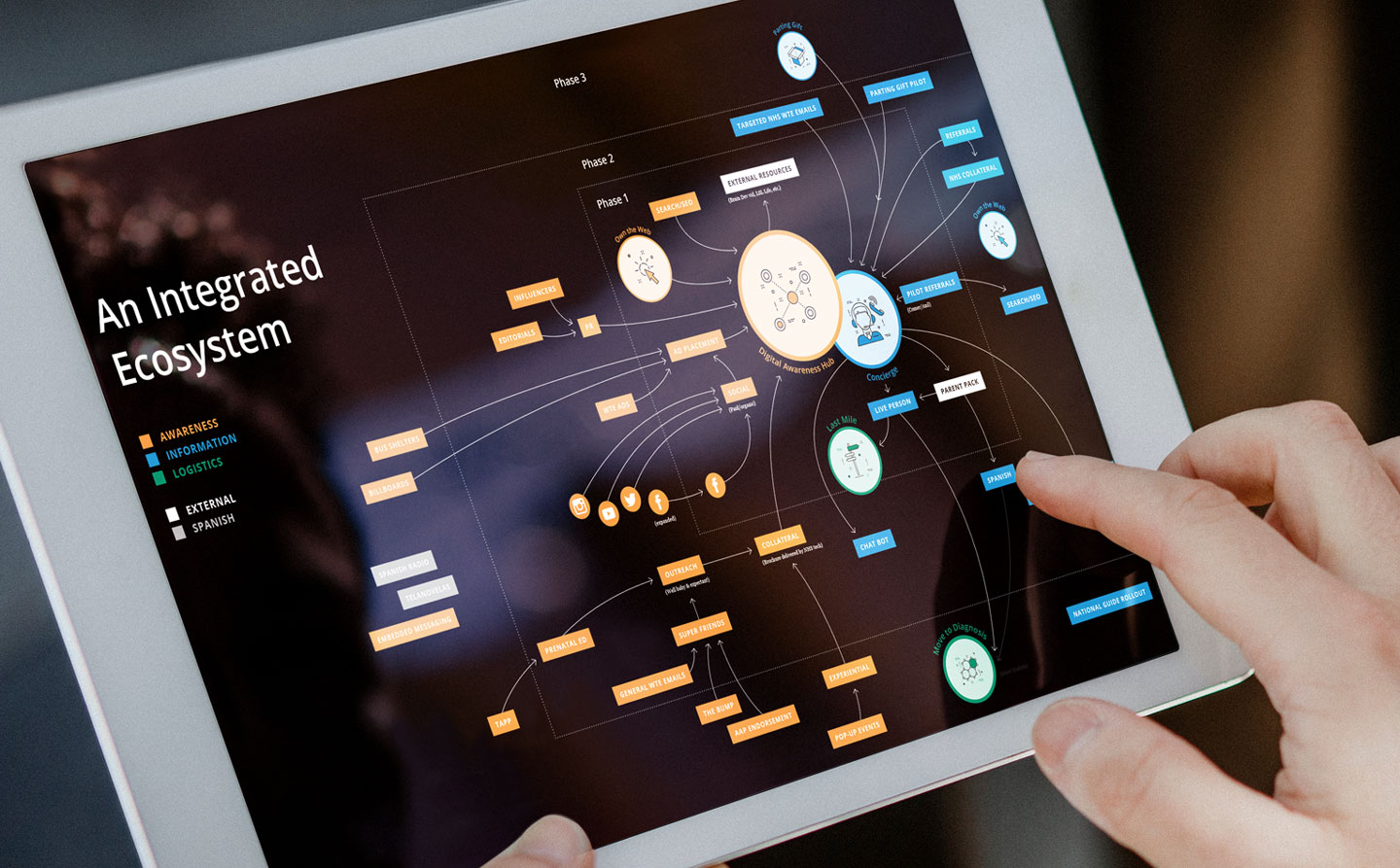
The challenge
Timing is critical
The first weeks and months of life are a crucial window for brain growth—and hearing is an important part of that development. Most babies born in the U.S. receive a Newborn Hearing Screening directly after birth. But then the process gets hairy.
The subsequent system is difficult for parents to navigate and causes delays in receiving treatments such as cochlear implants.

Gathering insights
In-depth ethnographic research
FiveStone conducted interviews and surveys with new and expectant parents and HCPs (Healthcare Providers, like Pediatricians and Pediatric Audiologists), and the government organizations who oversee best protocol and data collection. We looked to understand the state of newborn hearing attitudes and behaviors. Then, we led in-home ethnographic research that allowed us to talk to families whose babies had failed the hearing screening. We explored what compelled some of them to follow up quickly… and why some of them waited.
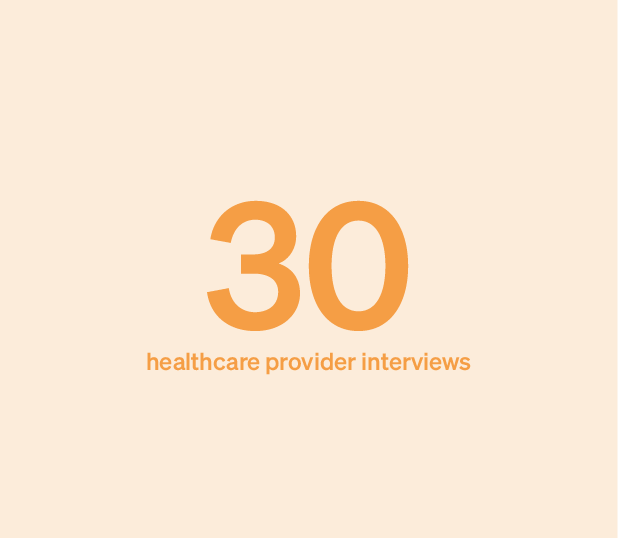
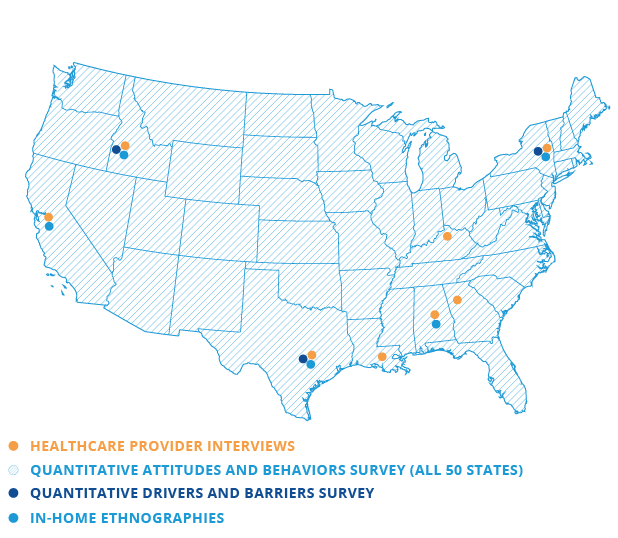
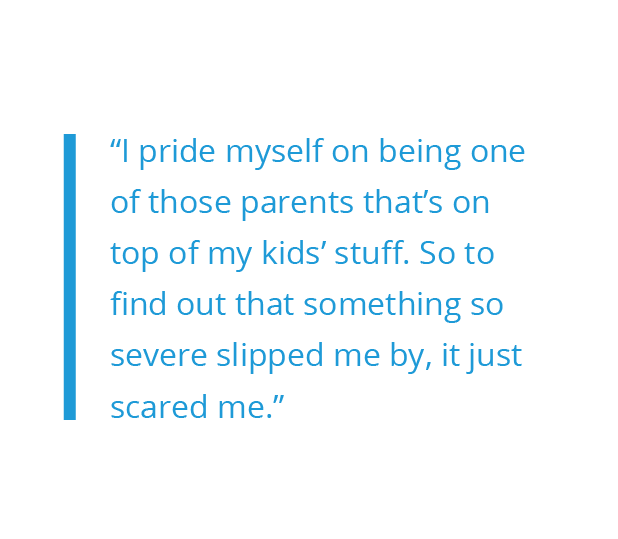
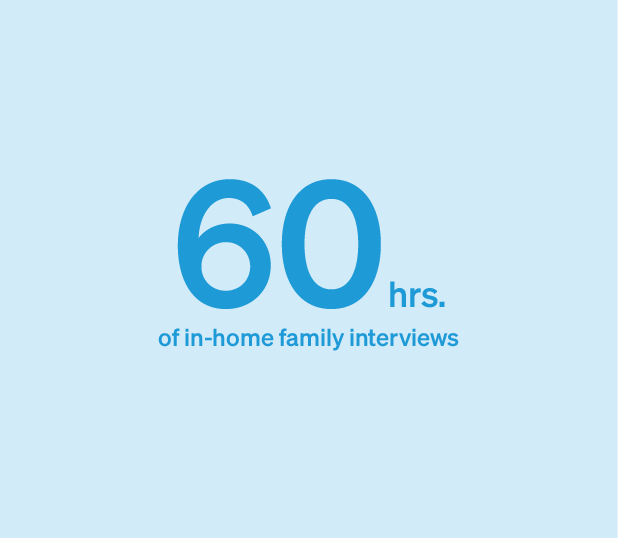

Uncovering a variety of experiences
Since hearing loss affects families from all walks of life, effective insights required research from a wide array of demographics and backgrounds. Interviews included those from inner cities, rural areas, migrant farmers, the highly affluent, poverty-stricken, non-English speakers, and those that were already DHH-informed.
Journey mapping
Designing an experience for families
The research revealed insights into the family journey, including challenges/barriers and drivers/influencers toward a successful outcome.

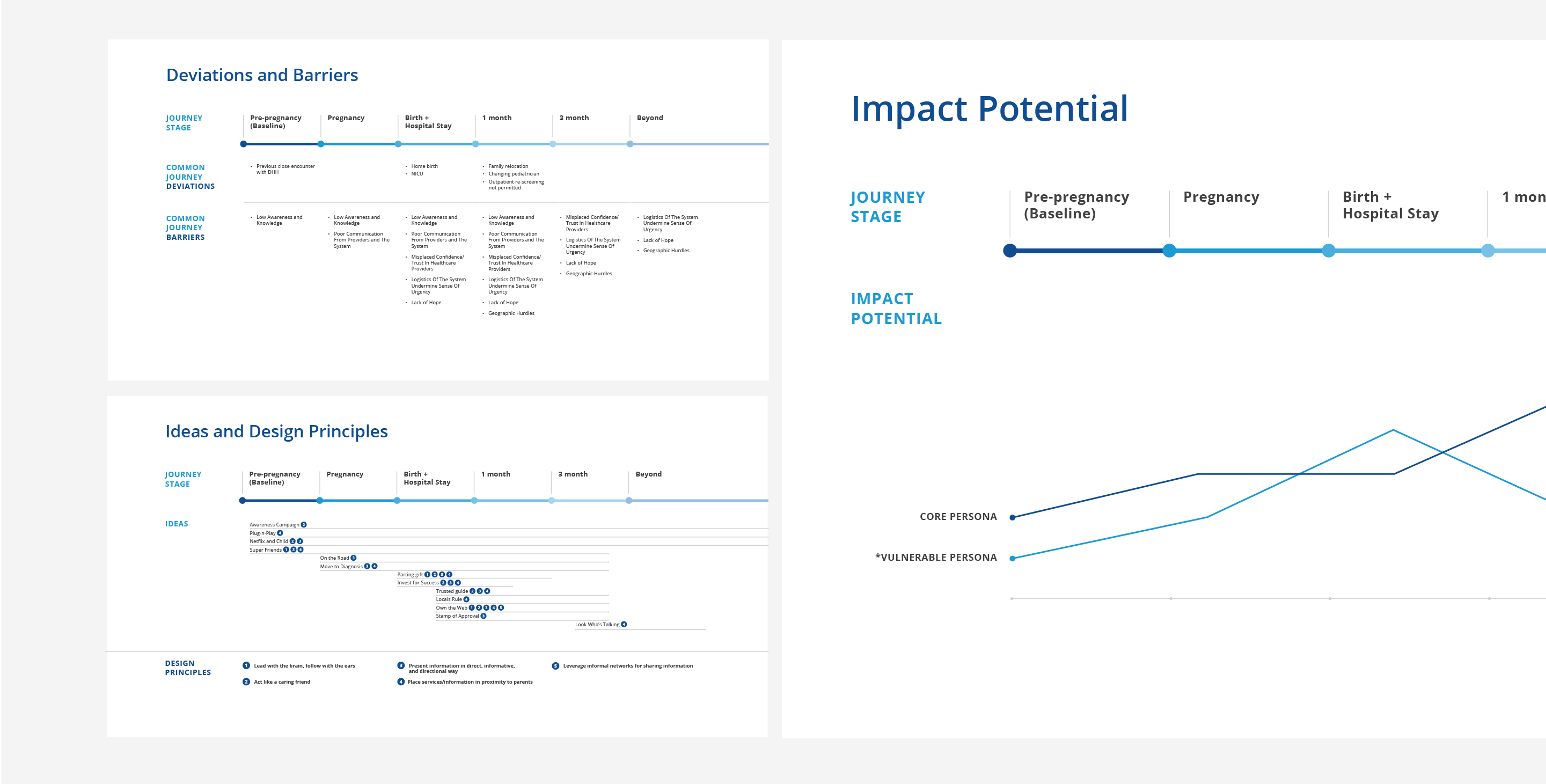
Insights and opportunities
Identifying and prioritizing opportunity areas
We learned all about the complex system that parents face— misinformation, red-tape, and a general lack of agreement among professionals. We then developed and tested a set of concepts with new and expectant parents to see which ideas would be most effective.
Powered by insights and guided by five design principles, initial concepts addressed every major opportunity along the family journey. Additional research and audience testing helped prioritize the solution set based on viability, feasibility and desirability.

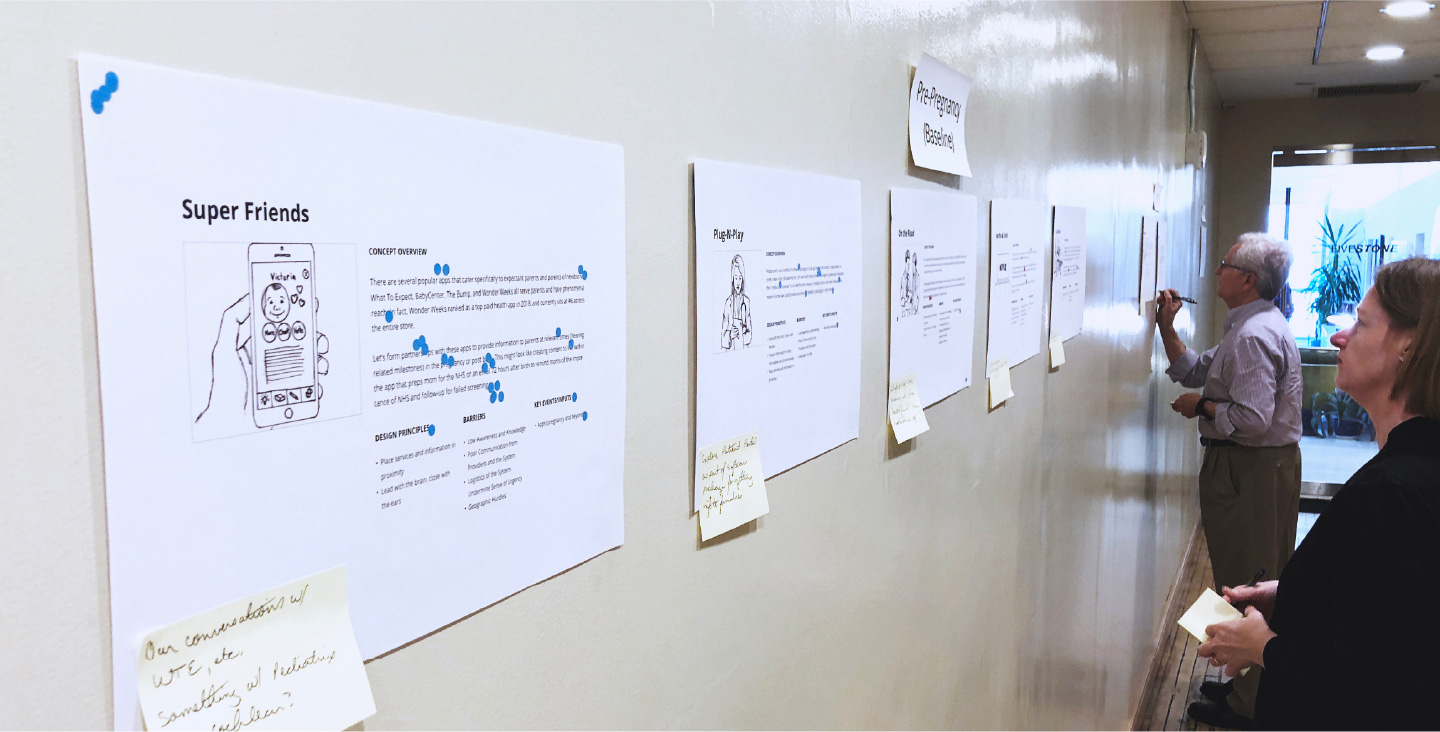
The outcome
A strategy for guiding parents
Extended research and concept development led FiveStone to produce a three-part strategy. The solution focused on raising awareness of the importance of screening follow-ups, developing good accessible information around the topic, and providing logistical support to help parents respond.
The strategy helped counter the broken system and inform a national awareness campaign, ultimately leading babies to receive a timely diagnosis.
